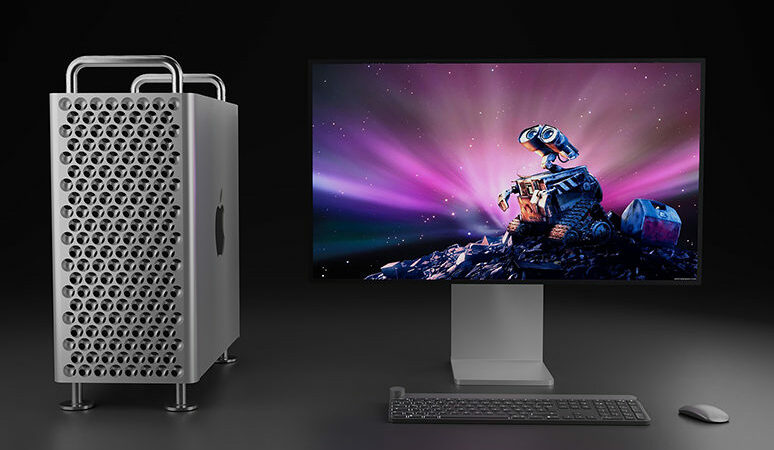Today marks both Apple’s return to a modular tower design for its flagship desktop Mac and the company’s re-entry into the external display market with the launch of the current Mac Pro and Pro Display XDR three years ago.
Uncharacteristically, Apple confirmed in April 2018 that a 2019 version of the redesigned Mac Pro would replace the 2013 model known as the “trashcan.” Together with the Pro Display XDR, Apple’s first new display since 2011’s Thunderbolt display, the new machine was officially unveiled at WWDC 2019. On December 10 of that year, the Mac Pro and Pro Display XDR finally went on sale.
The 2019 Mac Pro has a prominent lattice pattern that was made for the Power Mac G4 Cube in 2000. It is easy to get to the internals by just sliding off the casing. The machine was praised for its modularity and repairability, and it has eight PCIe expansion slots. For an additional $400, you can get it mounted on a rack or with wheels.
The Mac Pro supports up to 1.5TB of memory, two AMD Radeon Pro GPUs, and Intel Xeon chips with up to 28 cores, allowing it to run at its peak performance. It can also be set up to use Apple’s own Afterburner card to speed up ProRes. The Mac Pro’s lattice design is shared by the Pro Display XDR, which has a 32-inch 6K high-resolution panel that can take the place of a reference monitor.
The Mac Pro has a starting price of $5,999, but depending on how it is configured, it can cost almost $53,000. The Pro Display XDR can cost as much as $7,200 with options, starting at $4,999.
The Mac Pro is one of the last Intel-based Mac models that is still available for purchase and the only Mac product line that does not offer Apple silicon chip options three years after it was introduced. For more than two years, people have been hoping for a new model that finally brings Apple silicon to the company’s top-tier Macs for professionals. Apple even explicitly teased the launch of the Apple silicon Mac Pro at its “Peek Performance” event earlier this year, stating “that’s for another day.”
Multiple reports from Bloomberg’s Mark Gurman about the Apple silicon Mac Pro’s chip options and specifications provide a fairly straightforward picture of what can be expected from the new flagship professional Mac. Previously, reports about a smaller Mac Pro model placed somewhere between the Mac mini and the Mac Pro made it difficult to know what to expect from the future of the high-end Mac Pro line. However, it is now clear that many of these rumors related to the Mac Studio, which somewhat clarifies what can be expected from the next-generation Mac Pro Gurman claims that the new Mac Pro’s “M2 Ultra” and “M2 Extreme” chip options will allow users to customize it.
The device’s design, ports, performance, and actual potential for modularity and customization are all currently unknown beyond its basic specifications. A “Pro” version of the Studio Display with a mini-LED panel and support for ProMotion may accompany Apple’s anticipated launch of the silicon Mac Pro sometime in the coming year.
- Donald Trump Announces Tariffs That May Raise Consumer Costs - April 3, 2025
- Which Passport Gives You the Most Global Access in 2025? - April 3, 2025
- Disney Visa Card Offers Limited-Time $400 Bonus for Travelers - April 3, 2025





